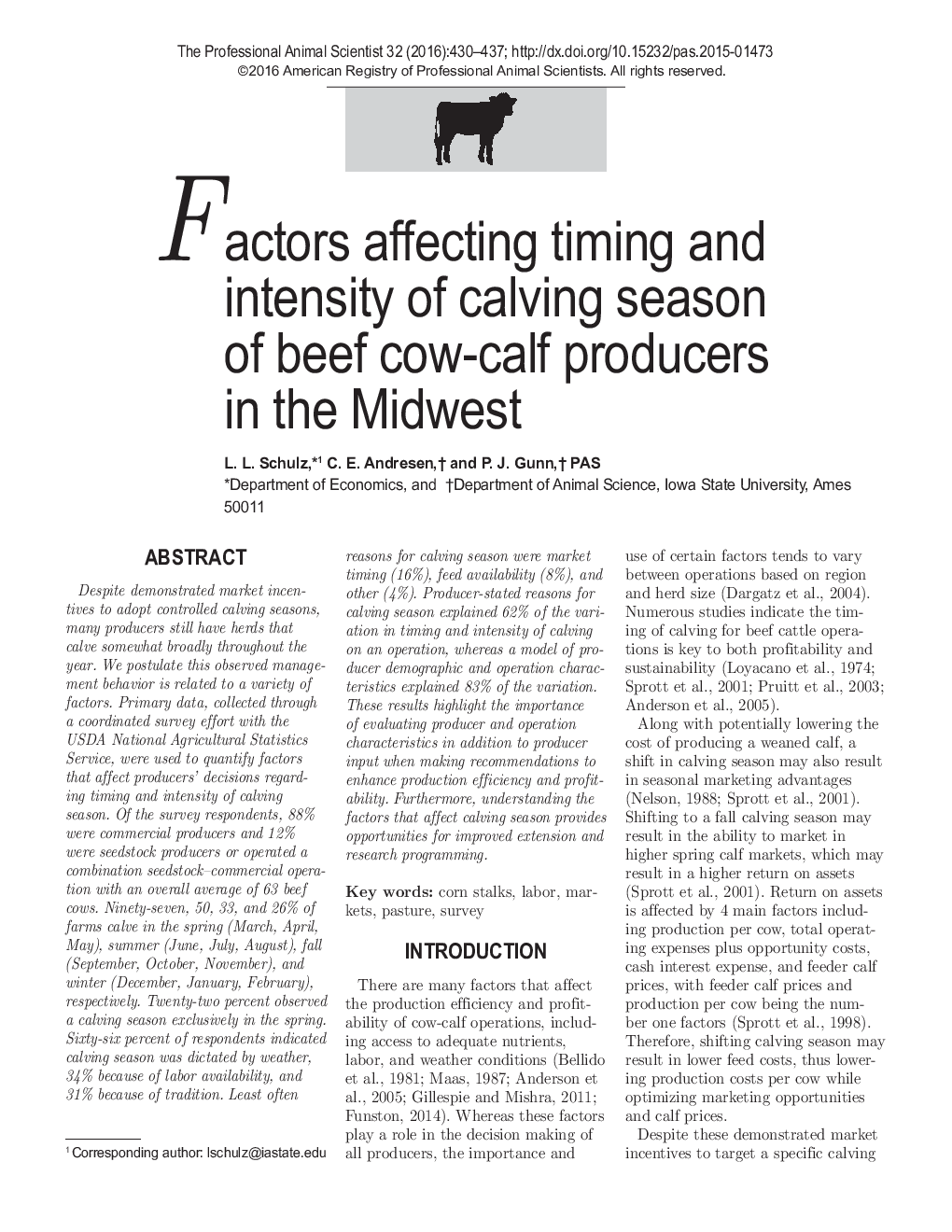| Article ID | Journal | Published Year | Pages | File Type |
|---|---|---|---|---|
| 8503849 | The Professional Animal Scientist | 2016 | 8 Pages |
Abstract
Despite demonstrated market incentives to adopt controlled calving seasons, many producers still have herds that calve somewhat broadly throughout the year. We postulate this observed management behavior is related to a variety of factors. Primary data, collected through a coordinated survey effort with the USDA National Agricultural Statistics Service, were used to quantify factors that affect producers' decisions regarding timing and intensity of calving season. Of the survey respondents, 88% were commercial producers and 12% were seedstock producers or operated a combination seedstock-commercial operation with an overall average of 63 beef cows. Ninety-seven, 50, 33, and 26% of farms calve in the spring (March, April, May), summer (June, July, August), fall (September, October, November), and winter (December, January, February), respectively. Twenty-two percent observed a calving season exclusively in the spring. Sixty-six percent of respondents indicated calving season was dictated by weather, 34% because of labor availability, and 31% because of tradition. Least often reasons for calving season were market timing (16%), feed availability (8%), and other (4%). Producer-stated reasons for calving season explained 62% of the variation in timing and intensity of calving on an operation, whereas a model of producer demographic and operation characteristics explained 83% of the variation. These results highlight the importance of evaluating producer and operation characteristics in addition to producer input when making recommendations to enhance production efficiency and profitability. Furthermore, understanding the factors that affect calving season provides opportunities for improved extension and research programming.
Keywords
Related Topics
Life Sciences
Agricultural and Biological Sciences
Animal Science and Zoology
Authors
L.L. Schulz, C.E. Andresen, P.J. PAS,
